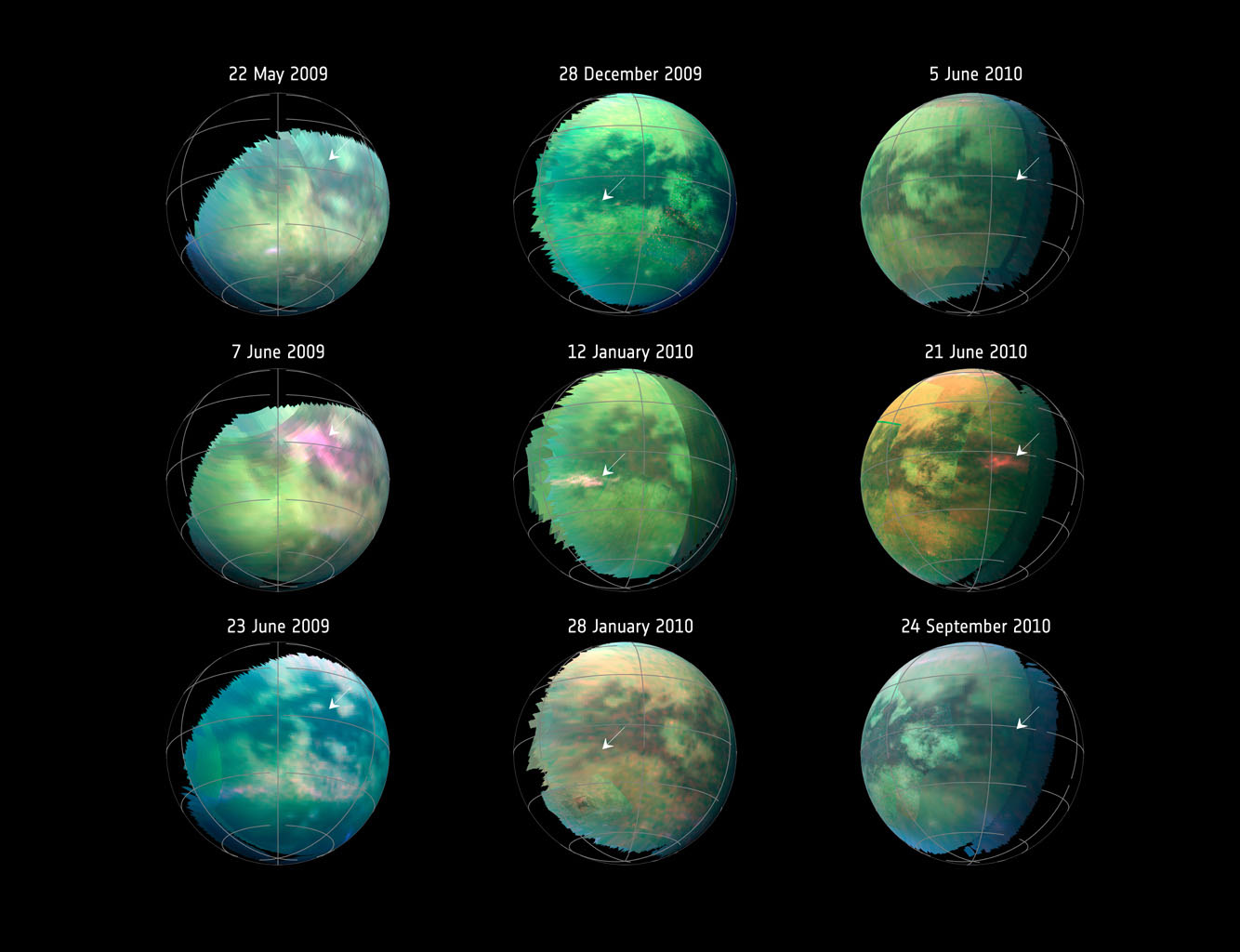Dust storms discovered on Saturn’s moon Titan
If you want to see a dust storm on Earth, you only need to visit one of its deserts. Beyond that, the next best opportunity for a dust storm is many millions of miles away on Mars, as NASA’s Mars rovers recently discovered. But there is yet a third celestial body that is regularly hit by dust storms – Saturn’s moon Titan.
Titan, after Ganymede the second largest moon in the Solar System, seems to be predestined, with its dense methane atmosphere, for such phenomena. There are, however, no active probes currently in the area around Saturn and wind speeds on the surface of Titan are believed to be relatively low. How can you nevertheless determine if recurring dust storms occur on this moon?
You take a closer look at existing data, in this case, data from the Cassini probe, which has long since crashed into Saturn. An international research team did just that and described what they found in an article in Nature Geoscience. The scientists noticed bright spots in the infrared images captured by Cassini in regions near Titan’s equator, particularly at the time of equinox. These bright spots normally correspond to methane clouds. However, around the equinox, it is physically impossible for ordinary clouds to form at these latitudes on Titan. In addition, the bright spots were only visible for a brief period, between eleven hours and a few weeks.
It turns out that there is only one explanation: dust storms. These are produced accordingly near the surface when strong winds that were previously not thought possible transport dust from the dunes in the equatorial regions into the atmosphere. These grains of dust are not originally from rocks like on Earth (primarily from silicon dioxide), but are instead frozen, organic substances with diameters less than a few thousands of a millimeter. The wind speeds necessary to carry these particles away would be less than ten meters per second, which corresponds, on Earth, to a Beaufort wind force of 5 (fresh breeze). Therefore, these dust storms would present just as little risk to astronauts as the dust storms on Mars. In addition, they only occur every 14.7 Earth years, because Saturn and Titan together need that long to complete one orbit around the Sun.

